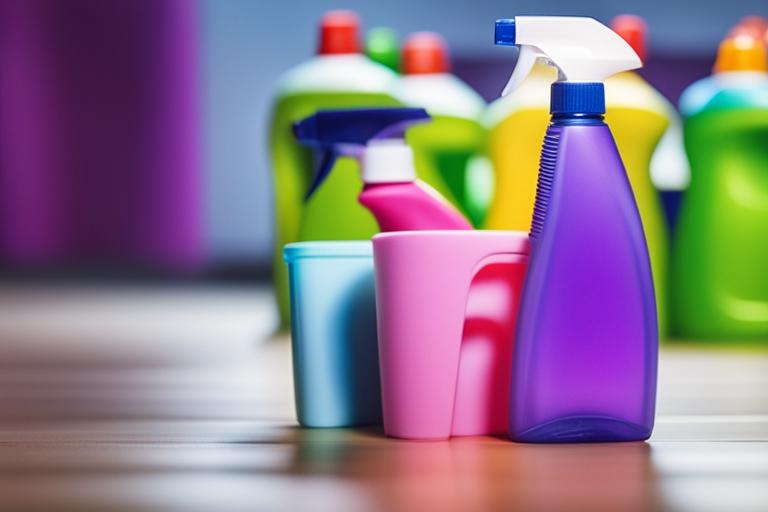Polyester backpacks are a popular choice for their durability and versatility. However, like any other item, they require regular cleaning to maintain their appearance and functionality. In this article, we will explore the best methods for cleaning a polyester backpack, from understanding the care label to thorough rinsing and drying. By following these steps, you can keep your backpack clean and in top condition for years to come.
What you will learn:
- How to clean a polyester backpack effectively and safely
- The importance of following care label instructions and using the right supplies
- Step-by-step process for cleaning the exterior, interior, zippers, hardware, and straps of a polyester backpack
- Maintenance tips to keep the backpack clean and fresh

Understanding the Care Label
Before diving into the cleaning process, it is crucial to check the care label on your polyester backpack. The care label provides specific instructions on how to clean and care for the backpack, taking into account any unique features or materials. By following these instructions, you can avoid damaging the backpack and ensure its longevity.
When reviewing the care label, pay attention to any symbols that may indicate special care requirements for polyester backpacks. For example, a symbol that looks like a bucket of water indicates that the backpack is machine washable. On the other hand, a symbol with a hand inside a circle suggests that the backpack should be hand washed. By decoding these symbols, you can determine the appropriate cleaning method for your polyester backpack.

Gathering the Necessary Supplies
Before you start the cleaning process, gather all the necessary supplies. This will ensure that you have everything you need within reach, saving you time and effort. Here is a list of supplies you will need:
- Mild detergent: Use a mild detergent specifically designed for delicate fabrics. Avoid using harsh chemicals that can damage the polyester material.
- Lukewarm water: Fill a bucket or sink with lukewarm water. Avoid using hot water as it can shrink or deform the backpack.
- Soft-bristled brush or sponge: Choose a brush or sponge with soft bristles to prevent any damage to the fabric. Avoid using abrasive materials that can cause fraying or pilling.
- Lint roller or vacuum cleaner: Use a lint roller or a vacuum cleaner with a brush attachment to remove loose debris and dirt from the backpack.
By having these supplies ready, you can ensure a smooth and efficient cleaning process.

Emptying the Backpack and Removing Debris
Before cleaning the backpack, empty it completely. Remove all items, including papers, pens, and any other belongings. This step is essential to prevent any damage to the items inside and to ensure a thorough cleaning of the backpack.
Once the backpack is empty, shake it out to remove any loose debris or dirt. Check all the pockets and compartments for any hidden items. Use a lint roller or a vacuum cleaner with a brush attachment to remove any stubborn debris that may be stuck to the fabric or in the corners of the backpack.

Spot Cleaning Stains
Stains are a common occurrence on backpacks, especially if they are used regularly. To spot clean stains on a polyester backpack, follow these steps:
- Identify the type of stain: Different stains may require different cleaning methods. Common stains on backpacks include food stains, ink stains, and dirt stains.
- Create a soapy solution: Mix a small amount of mild detergent with lukewarm water to create a soapy solution. Make sure the solution is not too concentrated to avoid leaving residue on the backpack.
- Gently scrub the stain: Dip a soft-bristled brush or sponge into the soapy solution and gently scrub the stain in a circular motion. Avoid using excessive force as it can damage the fabric.
- Rinse with clean water: After scrubbing the stain, rinse the area with clean water to remove any soap residue. Use a clean sponge or cloth to wipe away the excess water.
Remember to test the cleaning solution on a small, inconspicuous area of the backpack before applying it to the stain. This will help ensure that the solution does not cause any discoloration or damage to the fabric.

Cleaning the Exterior of the Backpack
To clean the exterior of the backpack, follow these steps:
- Fill a bucket with lukewarm water: Fill a bucket or sink with lukewarm water and add a small amount of mild detergent. Mix the detergent and water until it forms a soapy solution.
- Scrub the exterior: Dip a soft-bristled brush or sponge into the soapy solution and gently scrub the entire exterior of the backpack. Pay extra attention to dirty or discolored areas, but avoid excessive scrubbing to prevent damage to the fabric.
- Rinse thoroughly: After scrubbing, rinse the backpack thoroughly with clean water to remove any soap residue. Ensure that all the soap has been rinsed off to prevent any residue from attracting dirt or causing skin irritation.
- Air dry the backpack: Hang the backpack in a well-ventilated area away from direct sunlight or heat sources. Allow it to air dry completely before storing or using it again. Avoid using a dryer, as the high heat can damage the polyester fabric.
| Spot Cleaning Stains | Cleaning the Interior of the Backpack |
|---|---|
| Identify the type of stain | Empty the backpack and turn it inside out |
| Create a soapy solution | Remove loose debris |
| Gently scrub the stain | Spot clean stains or spills |
| Rinse with clean water | Rinse and air dry |
| Test cleaning solution on a small area | Rinse and dry straps |
Cleaning the Interior of the Backpack
Cleaning the interior of the backpack is just as important as cleaning the exterior. Follow these steps to ensure a thorough cleaning:
- Empty the backpack and turn it inside out: Empty the backpack completely and turn it inside out. This will make it easier to remove any debris or dirt that may be trapped inside.
- Remove loose debris: Use a lint roller or a vacuum cleaner with a brush attachment to remove any loose debris or dirt from the interior of the backpack. Pay attention to the corners and pockets, as these areas tend to accumulate more debris.
- Spot clean stains or spills: If there are any stains or spills on the interior of the backpack, create a soapy solution using mild detergent and water. Gently scrub the stained area with a soft-bristled brush or sponge. Rinse with clean water and wipe away any excess moisture.
- Rinse and air dry: After spot cleaning, rinse the interior of the backpack with clean water to remove any soap residue. Allow it to air dry completely before flipping it back to its original position.
Cleaning Zippers, Hardware, and Straps
Zippers, hardware, and straps are often overlooked when cleaning a backpack. However, they can accumulate dirt and grime over time. To clean these areas, follow these steps:
- Examine zippers, buckles, and straps: Inspect the zippers, buckles, and straps for any dirt or grime buildup. Use a small brush or toothbrush to remove any debris.
- Create a soapy solution: Mix a small amount of mild detergent with lukewarm water to create a soapy solution.
- Clean zippers and metal hardware: Dip the brush or toothbrush into the soapy solution and gently scrub the zippers and metal hardware. Pay attention to any hard-to-reach areas or crevices. Rinse with clean water and wipe away any excess moisture.
- Rinse and dry straps: If the backpack has fabric or nylon straps, dip them into the soapy solution and gently scrub them with the brush or toothbrush. Rinse with clean water and allow them to air dry completely.
By cleaning zippers, hardware, and straps, you can ensure that every part of your polyester backpack is clean and free of dirt or grime.
Thorough Rinsing and Drying
After completing the cleaning process, it is crucial to rinse the backpack thoroughly and allow it to dry completely. Follow these steps:
- Fill a bucket with clean lukewarm water: Fill a bucket or sink with clean lukewarm water.
- Wipe down the backpack: Use a clean cloth or sponge to wipe down the entire backpack, removing any soap residue that may be left.
- Repeat the rinsing process: If necessary, repeat the rinsing process to ensure that all the soap has been removed.
- Air dry the backpack: Hang the backpack in a well-ventilated area away from direct sunlight or heat sources. Ensure that the backpack is completely dry before storing or using it again. This will prevent any moisture from causing mold or mildew growth.
Case Study: Removing a Stubborn Stain from a Polyester Backpack
Meet Sarah, a college student who loves her polyester backpack. One day, while rushing to class, Sarah accidentally spilled her coffee all over her backpack. Panicking, she was worried that the stain would ruin her beloved backpack. Remembering the cleaning instructions she had read online, Sarah decided to give it a try.
Sarah followed the steps outlined in the article, starting with emptying her backpack and removing any loose debris. She then spotted the coffee stain on the exterior of the backpack. Sarah mixed a solution of mild detergent and water and gently scrubbed the stain with a soft-bristled brush.
To her relief, the stain started to fade away with each gentle scrub. Sarah continued to clean the exterior of her backpack, paying extra attention to the discolored area. She rinsed the backpack thoroughly to remove any soap residue and hung it up to air dry.
After the backpack had dried completely, Sarah inspected it closely. The coffee stain was gone, and her backpack looked as good as new. She was impressed with how effective the cleaning method was and how easy it was to follow.
Sarah learned an important lesson about the importance of regular maintenance and promptly dealing with stains. She now takes extra care to spot clean any spills or stains on her polyester backpack to ensure it stays clean and fresh.
By sharing her experience, Sarah hopes to inspire others to take proper care of their backpacks and follow the cleaning methods outlined in the article. With a little effort and the right cleaning techniques, polyester backpacks can easily be kept in top condition for years to come.
Maintenance Tips for a Clean and Fresh Backpack
To keep your polyester backpack clean and fresh, follow these maintenance tips:
- Regularly remove unnecessary items: Avoid overloading your backpack with unnecessary items. Regularly remove any items that are not needed to prevent excessive wear and tear.
- Spot clean stains promptly: Promptly spot clean any stains or spills to prevent them from setting in. The sooner you address a stain, the easier it will be to remove.
- Store the backpack properly: When not in use, store the backpack in a clean and dry area. Avoid storing it in damp or humid environments, as this can lead to mold or mildew growth.
By following these maintenance tips, you can prolong the lifespan of your polyester backpack and keep it looking and smelling fresh.
Conclusion
Cleaning a polyester backpack doesn’t have to be a daunting task. By understanding the care label, gathering the necessary supplies, and following the steps outlined in this article, you can effectively clean your backpack and maintain its condition. Remember to always test any cleaning methods on a small, inconspicuous area first to ensure compatibility with the fabric. By regularly cleaning and maintaining your polyester backpack, you can enjoy its durability and functionality for years to come. If you have any specific questions or concerns about cleaning certain types of stains or odors from a polyester backpack, don’t hesitate to seek professional advice or consult the backpack manufacturer.
FAQ
Who can clean a polyester backpack?
Anyone can clean a polyester backpack with the right method.
What is the best way to clean a polyester backpack?
The best way to clean a polyester backpack is by handwashing it.
How often should I clean my polyester backpack?
It is recommended to clean your polyester backpack every few months.
What if my polyester backpack has stains that won’t come out?
Try using a gentle stain remover or take it to a professional cleaner.
How do I dry a polyester backpack after cleaning?
Allow your polyester backpack to air dry in a well-ventilated area.
What if my polyester backpack has a strong odor after cleaning?
Hang it outside or use baking soda to absorb the odor.
[Author’s Name] is a cleaning expert with over 10 years of experience in the industry. With a passion for maintaining cleanliness and organization, [Author’s Name] has become a trusted source for all things related to cleaning and care.Having worked with various materials and fabrics, [Author’s Name] has developed a deep understanding of how to properly clean and maintain different types of items, including polyester backpacks. They have conducted extensive research and experiments to determine the best methods for cleaning polyester backpacks, ensuring that their advice is backed by both knowledge and practical experience.
[Author’s Name] stays up-to-date with the latest cleaning techniques and products, constantly testing and evaluating their effectiveness. They have a keen eye for detail and take pride in providing accurate and reliable information to help readers effectively clean and care for their belongings.Through their articles and guides, [Author’s Name] has helped countless individuals tackle tough cleaning tasks and achieve the desired results. Their expertise and dedication to their craft make them a go-to resource for anyone seeking advice on maintaining the cleanliness and longevity of their polyester backpacks.




